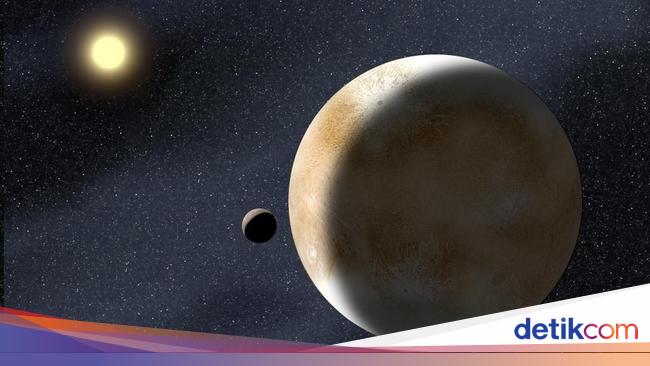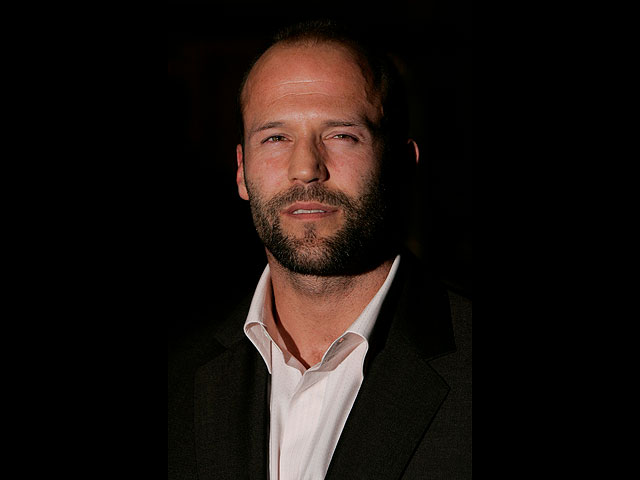Bandung –
Our solar system consists of the sun and eight planets. Earth, the planet we live in rotates around the sun along with other planets. If previously we knew there were nine planets, now the planet Pluto is no longer categorized as a planet.
Reporting from the International Astronomical Union page, iau.org explained that Pluto was first discovered in 1930. Pluto is a freezing cold world, billions of kilometers from Earth, and thirty times lighter than the planet previously known as the smallest planet, Mercury.
The view of the landscape of the Solar System then began to change since August 30, 1992 with the discovery of an object classified as a Trans-Neptunian Object (TNOs) whose size was .
With more and more discoveries of Trans-Neptunian Objects (TNOs), it seems inevitable that one object will eventually be discovered that rivals Pluto in size.
Follow-up observations revealed that the object was larger than Pluto and also had a satellite. With the discovery of an object farther away from Neptune with a size and mass greater than Pluto and the continued discovery of Trans-Neptunian objects, many astronomers have begun to wonder: “What is a planet, really?”
Until August 24, 2006 the definition of planets in the Solar System was approved as follows:
- An extraterrestrial object that:
- Orbit around the sun
- Has a mass large enough that its own gravity is able to oppose the rigid-body force that causes the object to have a shape that shows hydrostatic equilibrium (nearly spherical shape)
- Has “cleared” another object in the area around its orbit.
From the results of the IAU resolution, the Solar System officially has eight planets, namely Mercury, Venus, Earth, Mars, Jupiter, Saturn, Uranus, and Neptune.
Even so, astronomers are also still looking for the possibility of a ninth planet after removing Pluto. Until 2016, a planet was found which was later called Planet Nine or Planet X and was said to have a time 10 times greater than the earth and 5000 times the time of Pluto.
The following is the order of the planets in the Solar System after Pluto was removed:
1. Mercury
It is the smallest planet in the Solar System. During the day, Mercury’s temperature becomes very high, while at night it is very cold. Mercury makes a complete rotation around the Sun in 88 days.
On Mercury’s surface there are many large craters that are thought to be the result of a meteorite impact.
2. Venus
The size of Venus is almost like Earth, even so humans cannot live on this planet because its atmosphere is full of carbon dioxide which cannot be used to breathe.
Venus is shrouded in clouds of deadly sulfuric acid. Venus rotates in the opposite direction to the other planets. The rotation is also very slow. One day on Venus is equal to 243 days on Earth.
3. Earth
Earth is the only planet in the Solar System that is inhabited by living things. Life exists because there is liquid water on our planet where two thirds of the surface is covered with water.
The sun is also in the right distance so that it provides warmth in the right measure, so that people do not live hot or cold in very extreme weather.
Earth is also enveloped by a gas called the atmosphere which provides air to breathe and protects us from meteorite impacts.
4. Mars
Mars is called the red planet because of the dust that coats its surface. Mars is almost half the size of the planet Earth. It is possible that on Mars there was once a river because on its surface there are many traces of dry rivers, deep ravines and ex-coastal plains. If so, there may have been life there. But currently Mars only has frozen water at the north and south poles of Mars or underground in other parts.
Mars orbits the sun in 687 days.
5. Jupiter
Jupiter is the largest planet in the Solar System. On a rocky hard surface like Earth. The red, white, brown, and yellow streaks are thick clouds beneath Jupiter’s stormy atmosphere.
The large red dot on Jupiter’s surface is 3 times larger than Earth. It was actually a gigantic storm that had been raging for 300 years. Jupiter orbits the sun in 11.9 Earth years.
6. Saturn
Saturn is no bigger than Jupiter, but it is still a giant. The planet is surrounded by wide rings of chunks of rock and ice. Saturn is a “gas giant” whose thick atmosphere contains hydrogen. It takes 29.5 Earth years to go around the sun but a day on Saturn is shorter than on Earth because it rotates faster
7. Uranus
Uranus is the third largest planet and is mostly gas. Uranus is unusual because its axis of rotation is tilted. It takes 84 earth years for a complete rotation. Just like Saturn, Uranus is also surrounded by rings but thin
8. Neptune
Neptune is the fourth largest gas giant. It has several dark rings which are thin because it is so far from the sun. It is very cold and one of its satellites, Triton, is the coldest object in the solar system.
Neptune orbits the sun in 165 years.
That’s the order of planets in the current solar system without Pluto.
(tey/tya)
–


